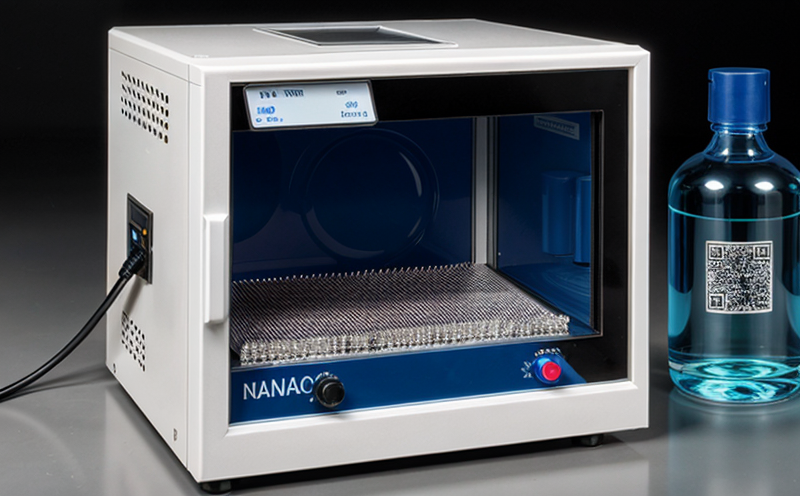ASTM E2864 Nanomaterial Risk Assessment Testing
The ASTM E2864 standard provides a framework for conducting nanomaterial risk assessments. This service is critical in understanding the potential impacts of engineered nanoparticles on human health and the environment. The process involves detailed characterization, toxicity testing, and exposure assessment to identify risks associated with specific nanostructures.
Nanomaterials are increasingly used across various industries due to their unique properties such as high strength-to-weight ratio, electrical conductivity, and catalytic activity. However, these properties also make them more prone to unintended interactions in biological systems or the environment. ASTM E2864 helps organizations ensure that they are managing those risks appropriately.
The testing protocol outlined by ASTM E2864 is comprehensive and involves several key steps:
- Identify the nanomaterials in use
- Characterize their physical, chemical, and biological properties
- Determine potential exposure routes and levels
- Conduct toxicity testing on relevant cell lines or organisms
- Evaluate the results against established safety thresholds
The ASTM E2864 approach ensures that all aspects of nanomaterial risk are considered, from initial synthesis to final product release. This holistic view helps companies comply with regulations and standards while also protecting public health.
Our laboratory uses advanced instruments like Transmission Electron Microscopy (TEM), Scanning Electron Microscopy (SEM), Dynamic Light Scattering (DLS), and Zeta Potential analyzers to fully characterize nanomaterials. For toxicity testing, we employ in vitro models such as human lung epithelial cells or embryonic fish embryos. Our team of experts ensures that every step is performed according to the latest ASTM E2864 guidelines.
The risk assessment process not only helps in regulatory compliance but also aids in product development by identifying potential issues early on. By addressing these concerns upfront, organizations can avoid costly recalls and adverse publicity. Moreover, this service supports sustainability goals by promoting responsible use of nanomaterials.
With increasing scrutiny from governments worldwide regarding the safety of nanotechnology products, ASTM E2864 testing has become essential for ensuring long-term success in the market. It offers a robust methodology that can be tailored to meet specific client needs and regulatory requirements.
Benefits
By leveraging ASTM E2864 nanomaterial risk assessment testing, organizations gain several advantages:
- Compliance with Regulations: Ensures adherence to current and evolving safety standards.
- Risk Management: Identifies potential hazards early in the product lifecycle.
- Informed Decision Making: Provides data-driven insights that guide strategic business decisions.
- Enhanced Reputation: Demonstrates commitment to responsible innovation and safety.
- Competitive Edge: Positions companies at the forefront of safe nanotechnology practices.
These benefits translate into reduced legal risks, improved public trust, and enhanced competitiveness in both domestic and international markets.
Industry Applications
This service finds application across multiple sectors where nanomaterials are used:
- Metalworking Fluids: Ensuring safety in manufacturing environments.
- Solar Cells: Evaluating efficiency and environmental impact of photovoltaic technologies.
- Batteries: Assessing performance and reliability while minimizing ecological footprint.
- Cosmetics: Guaranteeing ingredient safety in personal care products.
- Dental Products: Safeguarding oral health through rigorous testing protocols.
Our expertise spans these industries, allowing us to provide tailored solutions that meet the unique challenges and opportunities presented by nanomaterials.
International Acceptance and Recognition
The ASTM E2864 nanomaterial risk assessment testing is widely recognized across numerous countries, including:
- Australia
- Brazil
- Czech Republic
- India
- Singapore
This standard is increasingly being adopted by regulatory bodies worldwide, reflecting its importance in ensuring safe nanotechnology practices. It aligns with global efforts to protect public health and the environment.





